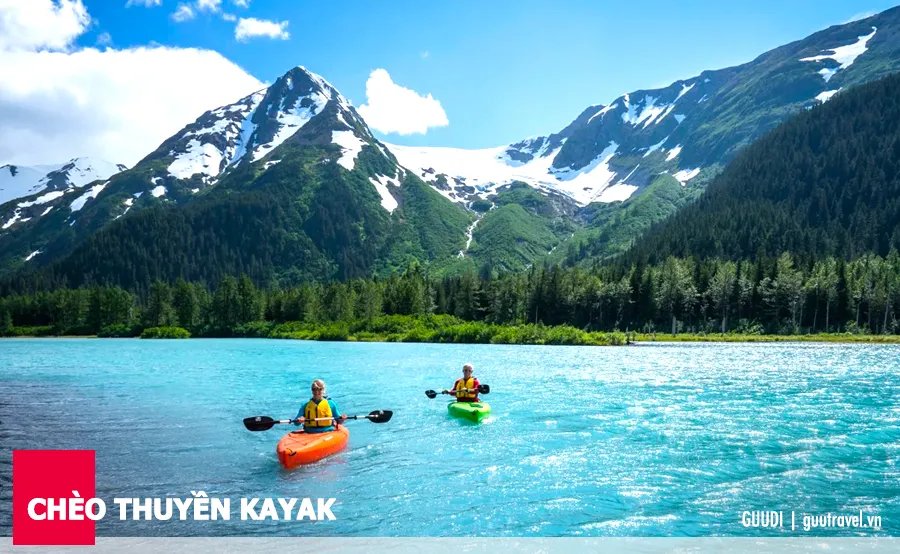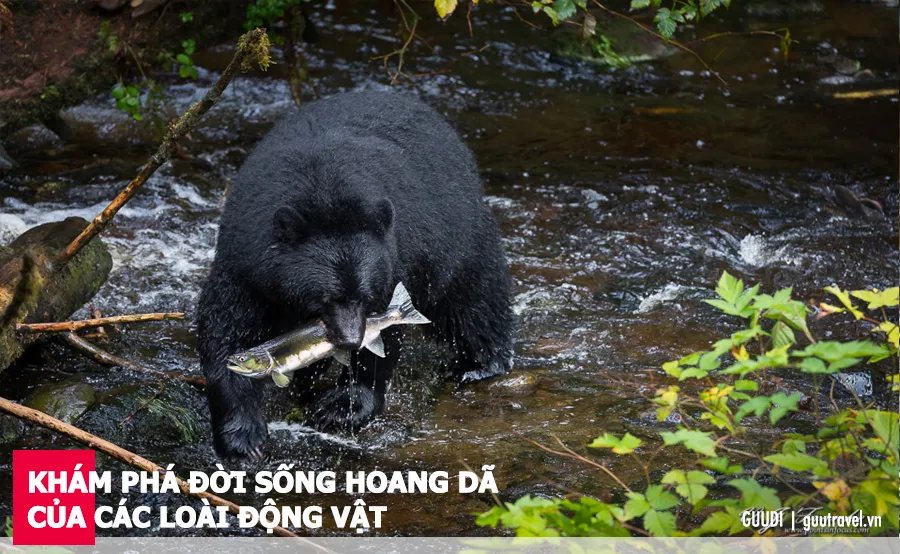The Bering Strait, a narrow waterway holding a vast world within, is a unique meeting point between Alaska, USA, and the Far East region of Russia. This area is not just a geographical boundary separating two nations and two continents, but also a region filled with fascinating aspects of history, culture, nature, and unparalleled travel experiences. A journey to explore the Bering Strait will take you to a pristine land where the majestic beauty of nature blends with profound historical imprints and unique cultural diversity.
Located between Cape Dezhnev of Eurasia and Cape Prince of Wales of North America, the Bering Strait acts as a natural bridge, once a crucial migration corridor in human history. Today, the strait maintains its strategic position in geopolitics, science, and tourism. This sea is renowned not only for its harsh climate and fierce snowstorms but also as a habitat for numerous rare wildlife species and indigenous communities with long-standing cultures.
Geographical Location and Strategic Importance of the Bering Strait
The Bering Strait, approximately 82 km wide at its narrowest point between Ratmanov Island (Russia) and Little Diomede Island (USA), is the gateway connecting the Arctic Ocean and the Bering Sea. It is one of the most important straits in the world, not only due to its special geographical location but also because of its historical and strategic role.
Historically, the Bering Strait is believed to be the site of Beringia, a land bridge where ancestors of humans migrated from Asia to America at the end of the Ice Age. This discovery completely changed the understanding of human origins and migration patterns on Earth. Geographically, the Bering Strait plays a crucial role in regulating the regional climate, influencing ocean currents and the marine ecosystem of both the North Pacific and Arctic Oceans.
Strategically, the Bering Strait was once a hotspot during the Cold War, becoming a direct confrontation line between the two superpowers, the Soviet Union and the United States. Today, the strategic importance of the strait remains undiminished. It is a vital sea route connecting Asia and America, especially as the Arctic becomes increasingly important economically and geopolitically.
Journey Back in History: From Discovery to Division
The history of the Bering Strait’s discovery is linked to the name of Russian explorer Vitus Bering, who conducted expeditions in the early 18th century under the commission of Peter the Great. In 1728, Bering sailed through this strait, proving the existence of a strait separating Asia and America, although other explorers had previously suspected this. Bering’s expedition opened a new chapter in the history of Arctic and Pacific exploration, and laid the foundation for Russia’s claim to Alaska.
After Russia sold Alaska to the United States in 1867, the Bering Strait officially became the border between the two countries. Throughout the 20th century, the strait witnessed many significant historical events, from World War II to the Cold War. Especially during the Cold War, the Bering Strait became an “icy iron curtain,” separating two opposing political systems. However, this confrontation also created a special buffer zone, where indigenous communities on both sides of the strait maintained cultural and family ties.
Exploring the Unique Indigenous Cultures on Both Shores
The Bering Strait is home to indigenous ethnic communities belonging to the Eskimo-Aleut group, including the Yupik people in Alaska and the Chukchi, and Siberian Yupik on the Russian side. These communities have lived and adapted to the harsh Arctic environment for thousands of years, developing a unique and rich culture.
Indigenous culture in the Bering Strait region is closely tied to the sea and wilderness. They are skilled hunters, depending on hunting whales, seals, walruses, and other marine animals. Their traditional arts and crafts often use natural materials such as animal skins, bones, and ivory to create unique works. Music and traditional ceremonies also play an important role in their cultural life, reflecting a deep connection to nature and the spiritual world.
Despite the influence of modern culture, indigenous communities in the Bering Strait are still striving to maintain and preserve their traditional cultural values. Cultural tourism is becoming an important means for them to introduce their unique culture to the world and generate sustainable income.
Arctic Wildlife Sanctuary: Amazing Wildlife of the Bering Strait
The Bering Strait is one of the most biodiverse regions in the Arctic, home to and a migratory route for many rare wildlife species. This sea is an ideal habitat for marine mammals such as whales, seals, walruses, and sea otters. You may have the opportunity to admire various whale species such as humpback whales, gray whales, bowhead whales, and blue whales, the giants of the ocean.

On the islands and coasts, you can observe huge seabird colonies, including gulls, albatrosses, cormorants, and Arctic terns. The Bering Strait is also an important stopover on the migration route of many migratory birds, attracting researchers and bird lovers from around the world. In addition, this area is also home to polar bears, Arctic foxes, reindeer, and many other wildlife species typical of the Arctic.
To preserve the diverse and rich ecosystem of the Bering Strait, both Russia and the United States have established nature reserves and national parks in the region. Visitors can explore these areas to discover the pristine beauty of nature and observe wildlife in their natural environment, while contributing to conservation efforts.
Unique Travel Experiences at the Bering Strait
A journey to explore the Bering Strait is not for travelers seeking luxury and comfort. This is a destination for those who love adventure, exploration, and experiencing new and unique things. Traveling to the Bering Strait offers the opportunity to experience unique and unforgettable activities:
Arctic Exploration Cruises: One of the best ways to explore the Bering Strait is to join Arctic cruise tours. Specially designed ice-class cruise ships will take you closer to the wilderness and majestic landscapes of the strait. You can admire magnificent icebergs, observe wildlife from the deck, and participate in activities such as kayaking, hiking on islands, and visiting indigenous villages.
Visiting the Diomede Islands: The Diomede Islands are located right in the middle of the Bering Strait, including Big Diomede Island (Russia) and Little Diomede Island (USA). These two islands are only about 3.8 km apart, but belong to two different countries and have a time difference (Big Diomede is almost 21 hours ahead of Little Diomede). Visiting the Diomede Islands provides a unique experience as you can stand on an international border and experience a special cultural intersection.
Exploring Indigenous Culture: Meeting and interacting with the Yupik and Chukchi indigenous communities is an integral part of exploring the Bering Strait. You can learn about their customs, arts, cuisine, and traditional way of life. Participating in local cultural festivals and shopping for unique handicrafts are also interesting experiences.
Bird and Wildlife Watching: The Bering Strait is a paradise for nature and wildlife lovers. Joining bird and wildlife watching tours will provide opportunities to observe many seabirds, marine mammals, and terrestrial animals in their natural environment. You can use binoculars and cameras to capture memorable moments.

Kayaking and Outdoor Activities: For adventurous travelers, kayaking on the Bering Sea is an unmissable experience. You can kayak along the coast, explore bays, caves, and admire the majestic natural scenery from a different perspective. In addition, hiking, mountaineering, and fishing are also popular activities in the area.
Conclusion
A journey to explore the Bering Strait between Alaska and Russia is an exciting and meaningful adventure. This place is not only a unique tourist destination but also a land containing invaluable historical, cultural, and natural values. The Bering Strait is a testament to the wonderful intersection of two worlds, where people can discover the pristine beauty of nature, learn about unique cultures, and experience new things, going beyond ordinary limits. Let “Travel the World” accompany you on your journey to explore the Bering Strait, opening a new chapter in your travel diary and bringing unforgettable memories of this special land.